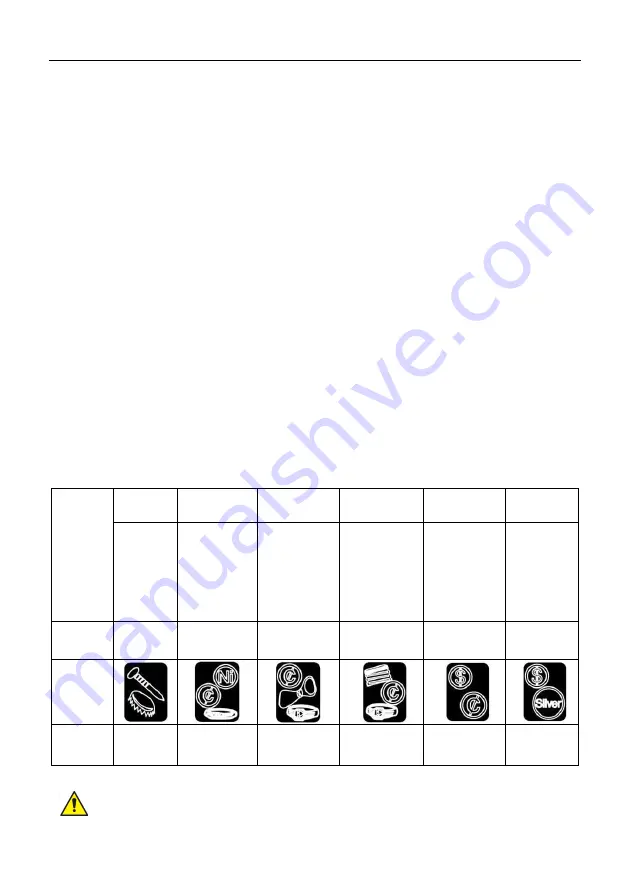
6.
False signals can be caused by contaminated ground, electrical interference, or
large irregular pieces of metal.
False signals are usually intermittent or not repeated.
FACTORS AFFECTING OBJECT DETECTION:
It is difficult to obtain an accurate detection result. Factors that affect the quality of
readings are:
•
the angle of the target buried in the ground,
•
the depth at which the target is located,
•
the degree of oxidation of the target,
•
the size of the target,
•
electro-magnetic and electrical interference surrounding the target,
•
measurements in the area of strongly mineralized soil, fertile ground or wet
sand - the detector will emit sound even if there is no metal in it. In this case
you can reduce the sensitivity. You can also increase the distance between the
probe and the ground,
•
metal digging tools placed near the unit.
TABLE OF METALS, TARGET IDENTIFIERS:
Target
iron
5¢
P-Tab
ZN, 1¢, S-
CAPS
10¢
25¢
iron
objects
aluminum,
nickel,
small gold
objects
aluminum,
some small
gold items,
can pull
tabs,
zinc,
aluminum,
medium-
sized gold
objects,
bottle tops,
zinc,
aluminum,
large gold
objects,
copper
coins
silver,
aluminum
Tone
Low
Low
Medium
Medium
High
High
Icon
Reading
value
10-40
41-50
55-70
72-75
80-83
86-88
CAUTION!
There is a wide variety of metals. The target detected by the unit
cannot be uniquely identified until it is unearthed. The table is for general reference
only.
















































